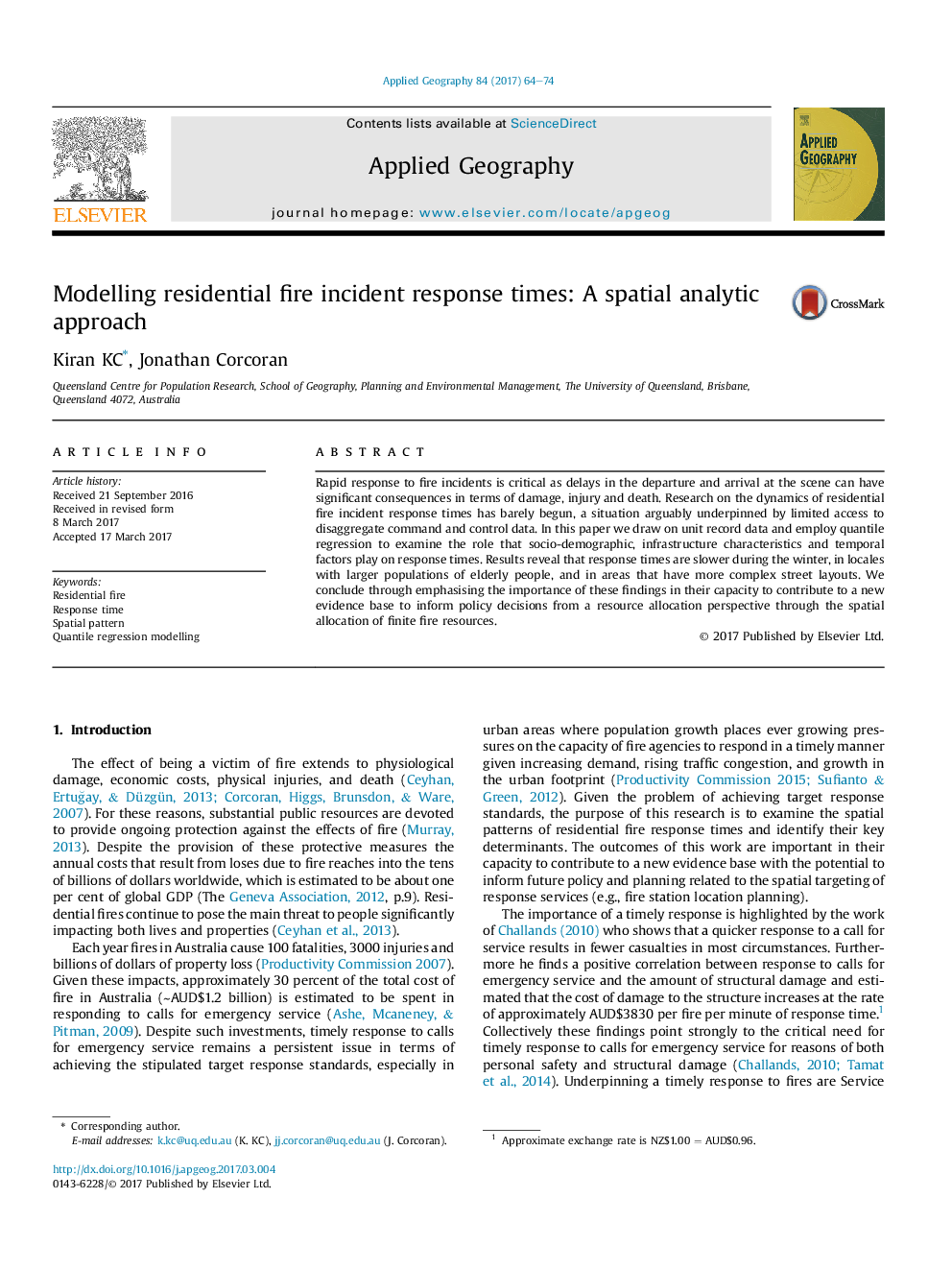| کد مقاله | کد نشریه | سال انتشار | مقاله انگلیسی | نسخه تمام متن |
|---|---|---|---|---|
| 4759027 | 1421033 | 2017 | 11 صفحه PDF | دانلود رایگان |
عنوان انگلیسی مقاله ISI
Modelling residential fire incident response times: A spatial analytic approach
ترجمه فارسی عنوان
مدل سازی زمان پاسخ وقوع حادثه مسکونی: یک رویکرد تحلیلی فضایی
دانلود مقاله + سفارش ترجمه
دانلود مقاله ISI انگلیسی
رایگان برای ایرانیان
ترجمه چکیده
واکنش سریع به حوادث آتش سوزی مهم است زیرا تاخیر در خروج و ورود به صحنه می تواند عواقب قابل توجهی را از لحاظ آسیب، آسیب و مرگ داشته باشد. تحقیقات پیرامون زمان پاسخگویی حوادث حادثه مسکونی به سختی آغاز شده است، وضعیتی که مسلما بر اساس دسترسی محدود به داده های فرماندهی و کنترل اختلال ایجاد شده است. در این مقاله، ما بر روی داده های واحد رکوردی استفاده می کنیم و از رگرسیون کیفی استفاده می کنیم تا نقش تعیین کننده ای را که در طول زمان پاسخگویی به خصوصیات اجتماعی و دموگرافیک، ویژگی های زیرساختی و عوامل موقتی ایفا می کند، مورد بررسی قرار دهیم. نتایج نشان می دهد که زمان پاسخ در طول زمستان، در مناطق با تعداد بیشتری از کودکان (14 سال و بالاتر) و خانوار های کم جمعیت اجتماعی و در مناطقی که طرح های خیابانی پیچیده تر دارند، کندتر است. ما با تأکید بر اهمیت این یافته ها در توانایی آنها در مشارکت در یک پایگاه مبتنی بر شواهد جدید برای اطلاع رسانی تصمیمات سیاسی از منظر تخصیص منابع از طریق تخصیص فضایی منابع محدود آتش است.
موضوعات مرتبط
علوم زیستی و بیوفناوری
علوم کشاورزی و بیولوژیک
جنگلداری
چکیده انگلیسی
Rapid response to fire incidents is critical as delays in the departure and arrival at the scene can have significant consequences in terms of damage, injury and death. Research on the dynamics of residential fire incident response times has barely begun, a situation arguably underpinned by limited access to disaggregate command and control data. In this paper we draw on unit record data and employ quantile regression to examine the role that socio-demographic, infrastructure characteristics and temporal factors play on response times. Results reveal that response times are slower during the winter, in locales with larger numbers of children (aged 14 years and below) and low socioeconomic households, and in areas that have more complex street layouts. We conclude through emphasising the importance of these findings in their capacity to contribute to a new evidence base to inform policy decisions from a resource allocation perspective through the spatial allocation of finite fire resources.
ناشر
Database: Elsevier - ScienceDirect (ساینس دایرکت)
Journal: Applied Geography - Volume 84, July 2017, Pages 64-74
Journal: Applied Geography - Volume 84, July 2017, Pages 64-74
نویسندگان
Kiran KC, Jonathan Corcoran,
